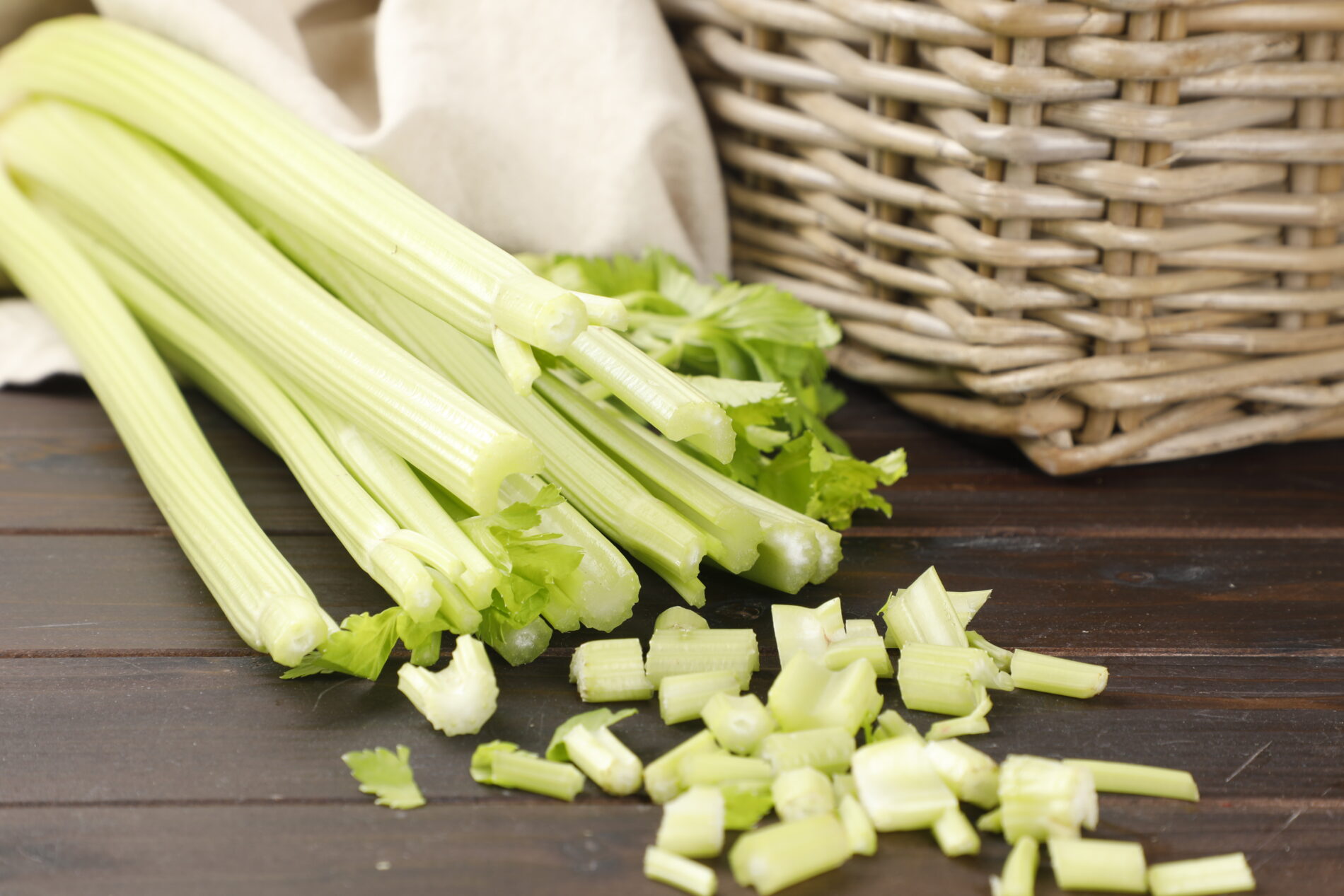Celery might be a leading instrument in a couple of dishes (braised celery, celery soup?..) but more often than not its primary role is supportive, more in the background. Even if you hate it, you still usually consume it when eating out – Western cuisine embraces this ingredient in so many dishes: stews, soups, braises.
Along with onions and carrots, celery is included in the most well-known kitchen preparation of French (and not only French, of course) cuisine – mirepoix. It’s a flavour base made from diced veggies and then cooked in butter or oil to get a nice flavour; or used as is without precooking. In Italian cuisine, celery is used in another flavour base which is known as soffritto. Have you ever tried Italian pasta with any thick sauce? Well, it definitely had celery in it.
Onions, bell peppers and celery
And have you ever heard of the holy trinity of Cajun cuisine – onions, bell peppers and celery – used to start the bases for their famous gumbos? The holy trinity is the name coined by one chef in the 80s, and, yes, of course, it’s an allusion Christian symbolism, probably made purposefully to stress the importance of all three ingredients mixed together.
But celery doesn’t stop at the stalk. Its seeds, for instance, are used in several classic flavour combinations together with tomatoes and meat casseroles. They will really shine on a great coleslaw or potato salad. Simply sprinkle some seeds for a flavour boost. But don’t expect too much: unsurprisingly, the flavour of a celery seed resembles that of a stalk. But what makes this celery spice super handy is its shelf life – use it whenever you’re out of fresh green produce or if you need the flavour but want to omit the fibrous stalks.
Celeriac
Not only celery marches its way through our kitchens. Another product is coming into fashion these days. We’re talking celeriac or celery root. Celery and celeriac are basically the same plant, but, of course, they can’t be used interchangeably. Not only because celeriac is usually more earthy and intense in flavour, but also because of its firm and dense structure. It’s a root vegetable and it has found its place in stews and soups (and here it resembles the usage of celery stalks), but it also can be transformed into a gratin dish (together with some potatoes) or thick velvety sauces and purees.
And don’t forget about celery leaves, they surely deserve far more attention than they usually get. Many people would simply discard them, but, please, don’t do that! They are delicious and so flavorful. Use greener parts in salads and on top of omelettes and sandwiches. As for the coarser ones – throw them into stocks, soups and sauces – right where celery belongs. Or make an easy pesto: just fill a bowl of a food processor with some nuts, 2 cloves of garlic and a heaping cup of celery leaves. Blend until finely chopped, scrape the sides of a bowl and blend again, streaming with a 1 cup of olive oil this time. Add grated Parmesan or any other hard cheese of your choice. Salt, pepper, pure joy.











What do you think?